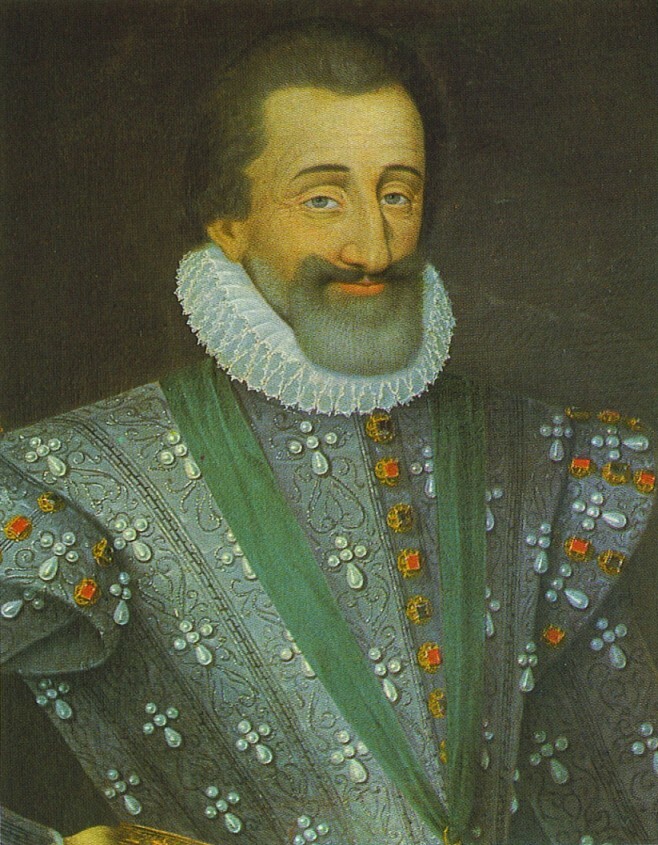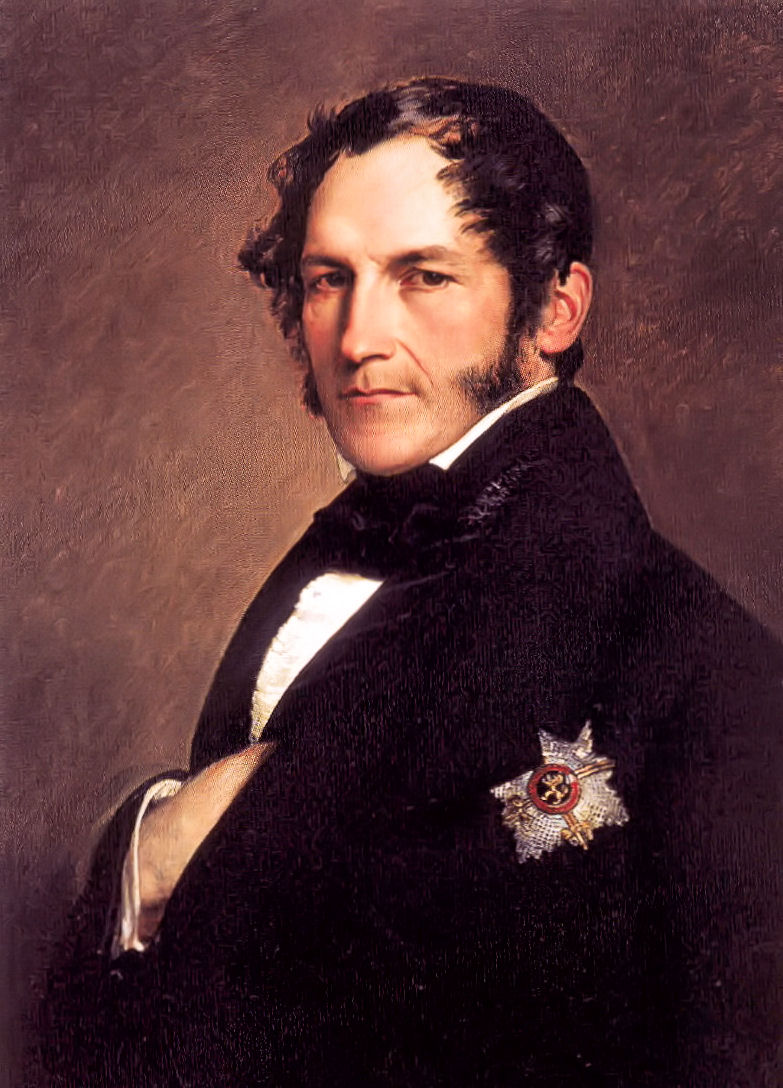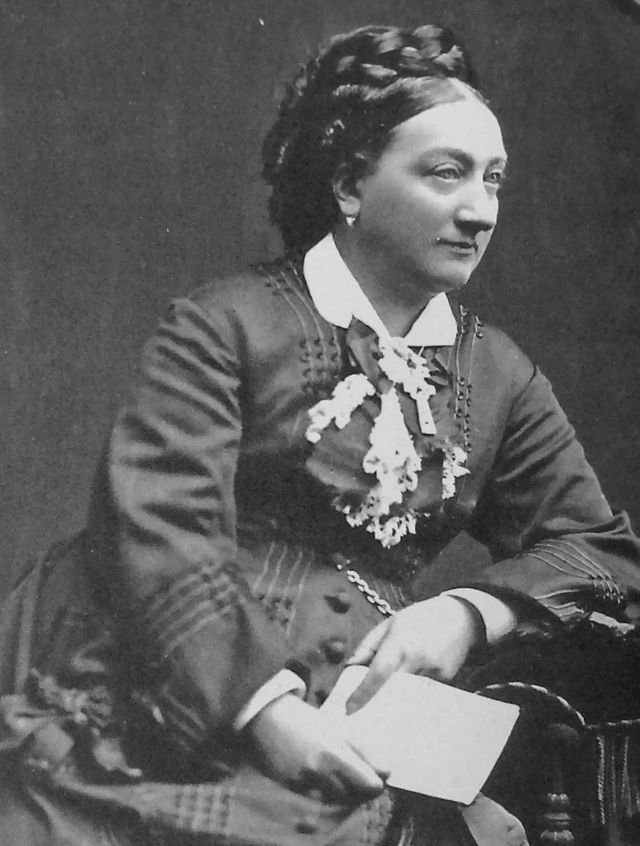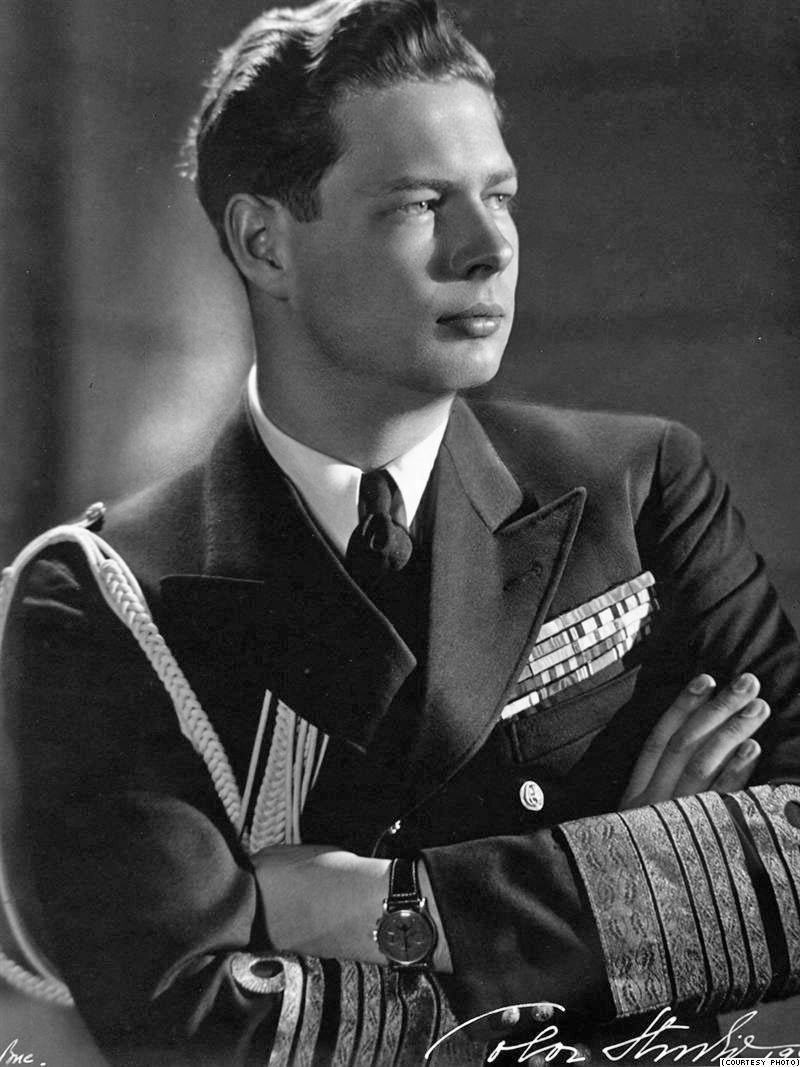© Unofficial Royalty 2024
Prince Albert of Saxe-Coburg and Gotha, Prince Consort of the United Kingdom; Credit – Wikipedia
December 14, 1542 – Death of James V, King of Scots at Falkland Palace in Fife, Scotland; buried at Holyrood Abbey in Edinburgh, Scotland; his six-day-old daughter Mary becomes Queen of Scots
James V was the son of James IV, King of Scots and Margaret Tudor, daughter of King Henry VII of England and sister of King Henry VIII of England. In 1513, 30-year-old James IV was killed in the Battle of Flodden and 17-month-old James V succeeded his father. In 1537, James married Madeleine of Valois, daughter of King François I of France. Already ill with tuberculosis, Madeleine died six months after the wedding. Less than a year later, James married another French bride, Marie of Guise, the eldest daughter of Claude of Lorraine, Duke of Guise. The couple had two sons who died in infancy, and one daughter, the future Mary, Queen of Scots. When Henry VIII of England broke from the Roman Catholic Church, he asked James V, his nephew, to do the same. James ignored his uncle’s request and further insulted him by refusing to meet with Henry VIII in York. Furious, Henry VIII sent troops against Scotland. In retaliation for the English raid into Scotland, James raised an army and attacked England. On November 24, 1542, the Battle of Solway Moss resulted in a decisive English victory. After the battle, James V fled to Falkland Palace where he became ill and took to his bed. Overcome with grief and shame about the Battle of Solway Moss, James V lost the will to live. The news that his wife Marie of Guise had given birth to a daughter did nothing to raise his spirits, and he died at the age of 30 and was succeeded by his only surviving legitimate child, six-day-old Mary, Queen of Scots.
Unofficial Royalty: James V, King of Scots
December 14, 1784 – Birth of Maria Antonia of Naples and Sicily, Princess of Asturias, first of the four wives of King Ferdinand VII of Spain, at the Royal Palace of Caserta in Caserta, Kingdom of Naples and Sicily, now in Italy; buried in the Pantheon of Infantes in the Royal Crypt of the Monastery of El Escorial in Spain
Full name: Maria Antonietta Teresa Amelia Giovanna Battista Francesca Gaetana Maria Anna Lucia
Maria Antonia was the daughter of King Ferdinand I of the Two Sicilies and Archduchess Maria Carolina of Austria. She was named after her mother’s favorite sister Marie Antoinette, Queen of France, born Archduchess Maria Antonia of Austria. In 1802, Maria Antonia married her first cousin, the future King Ferdinand VII of Spain. Her two pregnancies in 1804 and 1805 ended in miscarriages. Maria Antonia died, aged 21, in 1806, from tuberculosis. Rumors at the time said she had been poisoned but there is no evidence that this is true.
Unofficial Royalty: Maria Antonia of Naples and Sicily, Princess of Asturias
December 14, 1787 – Birth of Maria Ludovika of Austria-Este, Empress of Austria, the third of the four wives of Emperor Franz I of Austria, at the Royal Villa of Monza, in Lombardy, Austrian Empire, now in Italy; buried at the Capuchin Church in the Imperial Crypt in the Franzensgruft (Franz’s Vault) in Vienna, Austria
Full name: Maria Ludovika Beatrix
Maria Ludovika was the daughter of the heiress Maria Beatrice Ricciarda d’Este and Archduke Ferdinand Karl of Austria-Este. Her father was the son of Maria Theresa, Archduchess of Austria, and (in her own right) Queen of Hungary, Croatia, and Bohemia and Franz Stefan, Duke of Lorraine, Holy Roman Emperor. In 1807, Maria Ludovika’s first cousin, Franz I, Emperor of Austria, became a widower for the second time when his second wife Maria Theresa of Naples and Sicily (his double first cousin, also a first cousin of Maria Ludovika) died after childbirth along with her 12th child. The 39-year-old Emperor consoled his grief with visits to his aunt (by marriage) Maria Beatrice Ricciarda and fell in love with the beautiful and literate Maria Ludovika who was 19 years old. Maria Ludovika and Franz were married on January 6, 1808, but they had no children. Maria Ludovika died eight years later from tuberculosis.
Unofficial Royalty: Maria Ludovika of Austria-Este, Empress of Austria
December 14, 1788 – Death of King Carlos III of Spain at the Royal Alcazar of Madrid in Spain; buried at the Royal Seat of San Lorenzo de El Escorial in Spain
Carlos III, King of Spain was also Duke of Parma and Piacenza, as Carlo I (1731 – 1735), King of Naples, as Carlo VII (1735 – 1759), and King of Sicily, as Carlo V (1734 – 1759). In 1738, Carlos’ mother Elisabeth Farnese arranged a marriage for him to fourteen-year-old Maria Amalia of Saxony. Carlos III and Maria Amalia had thirteen children but only seven survived childhood. In in 1759, Carlos’ childless elder surviving half-brother Fernando VI, King of Spain died and Carlos succeeded him as King of Spain. When Carlos became King of Spain, he was 43 years old and had ruled Naples and Sicily for twenty-five years, so he had far more experience than his predecessors. Carlos III was responsible for some of Spain’s national symbols. In 1770, he declared the Marcha Granadera to be used during official ceremonies. Since that time, it has been Spain’s national anthem except under the Second Republic ( 1931 – 1939 ). Carlos III also chose the colors and design of the Spanish flag as we see it today.
Unofficial Royalty: Carlos III, King of Spain
December 14, 1788 – Birth of Sir James Clark, 1st Baronet, Queen Victoria’s Physician-in-Ordinary from 1837 – 1860, at Cullen House in Cullen, Banffshire, Scotland
During the summers, Clark acted as physician to Prince Leopold of Saxe-Coburg-Saalfeld (King Leopold I of the Belgians from 1831) as he traveled through the spa towns of Germany. Through this connection, in 1835, Clark was appointed physician to Leopold’s sister the Duchess of Kent (born Princess Victoria of Saxe-Coburg-Saalfeld), the widow of King George III’s son Prince Edward, Duke of Kent. The Duchess’ only child Princess Victoria of Kent was the heir to the British throne. Several months after her accession to the throne in June 1837, Queen Victoria appointed Clark her Physician-in-Ordinary. In 1839, Clark’s misdiagnosis and a desire to please Queen Victoria led the court into the Lady Flora Hastings scandal in which pregnancy was intimated as the cause of her swollen abdomen. After Lady Flora’s death, an autopsy showed that she had a cancerous liver tumor. In 1842, Clark prescribed calomel, a laxative and common medicine at the time, to 14-month-old Victoria, Princess Royal. Unknown at that time, calomel contained toxic mercury chloride. Vicky did not become better but rather became seriously ill. Albert confronted Victoria with a furious note to his wife, “Dr. Clark has mismanaged the child and poisoned her with calomel and you have starved her. I shall have nothing more to do with it, take the child away and do as you like and if she dies you will have it on your conscience.” Vicky survived and Clark still remained in royal service. Although Clark was considered incompetent, he remained in royal service until 1860.
Unofficial Royalty: Sir James Clark, 1st Baronet
December 14, 1861 – Death of Prince Albert, The Prince Consort, husband of Queen Victoria of the United Kingdom, at Windsor Castle in Windsor, England; buried at the Royal Mausoleum, Frogmore in Windsor, England
In November 1861, Albert complained of shoulder, leg, back, and stomach pain and could not eat or sleep. He was examined by doctors who assured Victoria that Albert would be better in two or three days. Even while Albert was feeling ill, he was still working. When the Trent Affair, the forcible removal of Confederate diplomats from a British ship by Union forces during the American Civil War, threatened war between the United States and the United Kingdom, Albert intervened on November 30, 1861, to soften the British diplomatic response. His action probably prevented war between the United States and the United Kingdom. However, Albert’s condition continued to worsen. Victoria continued to hope for a recovery, but finally, on December 11, the doctors told her the dismal prognosis. At 10:50 PM on December 14, 1861, Albert died in the presence of his wife and five of their nine children. Sir William Jenner, one of Prince Albert’s doctors, diagnosed his final illness as typhoid fever, but Albert’s modern biographers have argued that the diagnosis is incorrect. Albert had been complaining of stomach pains for two years and this may indicate that he died of some chronic disease, perhaps Crohn’s disease, kidney failure, or cancer.
Unofficial Royalty: Prince Albert of Saxe-Coburg-Gotha, The Prince Consort
Unofficial Royalty: December 14 – Queen Victoria’s Dire Day
December 14, 1873 – Death of Elisabeth Ludovika of Bavaria, Queen of Prussia, wife of King Friedrich Wilhelm IV of Prussia, in Dresden, Kingdom of Saxony, now in Saxony, Germany; buried at the Friedenskirche in Potsdam, Kingdom of Prussia, now in Brandenburg, Germany
Elisabeth Ludovika was the daughter of King Maximilian I Joseph of Bavaria and his second wife Princess Caroline of Baden. She was the twin sister of Amalie Auguste. In 1823, Elisabeth Ludovika married the future King Friedrich Wilhelm IV of Prussia, after four years of negotiations regarding religion. Friedrich Wilhelm was required to be Lutheran, while Elisabeth Ludovika was Catholic. Eventually, it was agreed that she could retain her religion with the expectation that she would eventually convert. She did convert, but not until 1830. Other than a stillborn child born early in their marriage, the couple had no children. After becoming Queen in 1840, Elisabeth Ludovika welcomed her role and became greatly involved in charity work throughout Prussia. After her husband died in 1861, she continued her charity work, mostly to honor her late husband. Elisabeth Ludovika had a close relationship with the wife of her nephew by marriage, Crown Princess Victoria, born Victoria, Princess Royal. Victoria had been a great comfort to the widowed Elisabeth Ludovika and she bequeathed her jewels to Victoria instead of following the tradition and leaving them to the new Queen Augusta. This act of kindness ended up causing a rift between Victoria and her mother-in-law that would last until Queen Augusta’s death. Elisabeth Ludovika died, aged 72, while visiting her twin sister Queen Amalie of Saxony.
Unofficial Royalty: Elisabeth Ludovika of Bavaria, Queen of Prussia
December 14, 1878 – Death of Princess Alice of the United Kingdom, Grand Duchess of Hesse and by Rhine, wife of Grand Duke Louis IV of Hesse and by Rhine, daughter of Queen Victoria, at Neues Palais in Darmstadt, Grand Duchy of Hesse and by Rhine, now in Hesse, Germany; buried at the Mausoleum of Rosenhöhe in Darmstadt
In November 1878, Alice’s family began to fall ill with diphtheria. Alice quickly slipped into her role as caregiver, nursing her husband and children back to health. Sadly, her youngest child, Princess Marie, succumbed to the illness and died on November 16, 1878. Alice tried to keep the news from her husband and other children until they were in better health. Eventually telling her son, Ernst Ludwig (who was quite devoted to the young May), she broke the one rule of nursing this horrible illness – she comforted him with hugs and a kiss. Soon after, Alice herself began to fall ill and was also diagnosed with diphtheria. Her condition quickly deteriorated, and in the early morning of December 14, 1878 — the 17th anniversary of her father’s death – Princess Alice, Grand Duchess of Hesse and by Rhine died at the age of 35.
Unofficial Royalty: Princess Alice of the United Kingdom, Grand Duchess of Hesse and by Rhine
December 14, 1895 – Birth of King George VI of the United Kingdom at York Cottage at Sandringham in Norfolk, England
Prince Albert Frederick Arthur George was born on the 34th anniversary of the deaths in 1861 of his great-grandfather Prince Albert and his great-aunt Princess Alice in 1878. Queen Victoria received the news with mixed feelings. Her son, the Prince of Wales (later King Edward VII) wrote to his son (the future King George V), the new baby’s father: “Grandmama was rather distressed that this happy event should have taken place on a darkly sad anniversary for us, but I think – as well as most of us in the family here – that it will break the spell of this unlucky date.” George went on to succeed to the British throne upon the abdication of his brother King Edward VIII.
Unofficial Royalty: King George VI of the United Kingdom
December 14, 1901 – Birth of King Paul I of Greece in Athens, Greece
A Greek great-grandson of Queen Victoria and Prince Albert, Paul was born on December 14, 1901, 11 months after Queen Victoria’s death and on the 40th anniversary of Prince Albert’s death. The future King Paul I of Greece was the son of King Constantine I of Greece and Princess Sophie of Prussia, the daughter of Queen Victoria’s eldest child Victoria, Princess Royal. Paul married Princess Frederica of Hanover, who was also a great-grandchild of Queen Victoria through Victoria, Princess Royal. They were the parents of Queen Sofia of Spain, the wife of King Juan Carlos of Spain, and Constantine II, the last King of Greece. In 1946, Paul ascended the Greek throne following the sudden death of his brother King George II. After a state visit to the United Kingdom in July 1963, King Paul fell ill. He was later diagnosed with stomach cancer and died on March 6, 1964.
Unofficial Royalty: King Paul I of Greece
December 14, 1940 – Death of Princess Maria of Greece, Grand Duchess Maria Georgievna of Russia, daughter of King George I of Greece and Grand Duchess Olga Konstantinovna of Russia, in Athens, Greece; buried at the Royal Cemetery, Tatoi Palace, Greece
In 1900, Maria married a maternal cousin Grand Duke George Mikhailovich of Russia, the son of Grand Duke Mikhail Nikolaevich of Russia and the grandson of Nicholas I, Emperor of All Russia. The couple had two daughters. The marriage was never happy. Maria was not in love with her husband, despite his devotion to her. She soon found excuses to leave Russia and spent more time in Greece and elsewhere in Europe. When World War I began, Maria was living in Harrogate, England with her two daughters and chose to remain there and not return to Russia. Her husband, like many in the Russian Imperial Family, was murdered by the Bolsheviks with three other Grand Dukes of Russia in January 1919, leaving Maria a widow. In 1920, Maria was able to return to Greece when her brother King Constantine I was brought back to power. She traveled aboard a Greek destroyer commanded by Admiral Pericles Ioannidis, and a romance developed. The couple married two years later in 1922. Maria, aged 64, died of a heart attack in 1940.
Unofficial Royalty: Princess Maria of Greece, Grand Duchess Maria Georgievna of Russia
December 14, 1945 – Death of Princess Maud, Countess of Southesk at a nursing home in London, England; buried at the home of the Carnegie family, the Earls of Southesk, Kinnaird Castle in Brechin, Angus, Scotland
Maud was the youngest child of Princess Louise, Princess Royal and Alexander Duff, 1st Duke of Fife, and a grandchild of King Edward VII of the United Kingdom. She married Charles Carnegie, 11th Earl of Southesk. After her marriage, Maud stopped using ‘Her Highness Princess Maud’ and was known as Lady Carnegie. In 1941, upon his father’s death, Maud’s husband became the 11th Earl of Southesk. Maud and her husband had one son. On December 14, 1945, Maud, aged 52, died of bronchitis on the 84th anniversary of the death of her great-grandfather Prince Albert.
Unofficial Royalty: Princess Maud, Countess of Southesk
This article is the intellectual property of Unofficial Royalty and is NOT TO BE COPIED, EDITED, OR POSTED IN ANY FORM ON ANOTHER WEBSITE under any circumstances. It is permissible to use a link that directs to Unofficial Royalty.









